Lean-Body Secrets from Exercise Experts Over 60
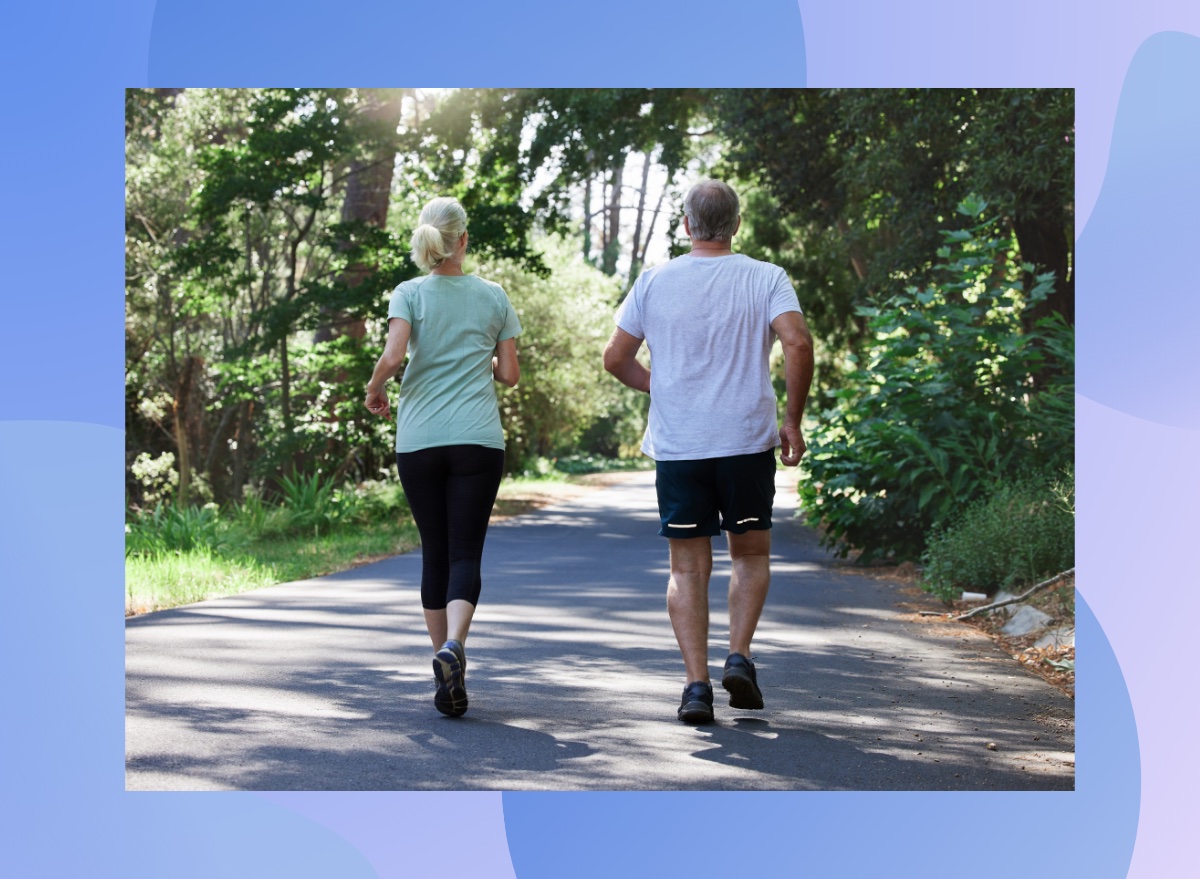
Having a dedicated exercise regimen as you age is crucial for maintaining your mobility, your muscle mass, your flexibility, your metabolism, and even your cognitive performance. (See here for more on that.) It’s also important for keeping your energy levels high and for maintaining a higher quality of life. If you’re over 60 and you’d like to experience those benefits—and also to “lean up” and have a trim, fit figure—know that it’s a three-step process.
First, you need to take a harder look at all of the things you’re putting into your body. (See here for all of the great foods you should be incorporating into your diet.) Second, you need to do the right exercises and consistently. And third, you need to incorporate the following exercise tips and tricks into your routine. How do we know they work? Well, they all come straight from leading fitness professionals who are all over 60 themselves. So read on, and for some exercises to avoid, don’t miss this list of The Worst Exercises You Can Do After 60.
Be More Intimate
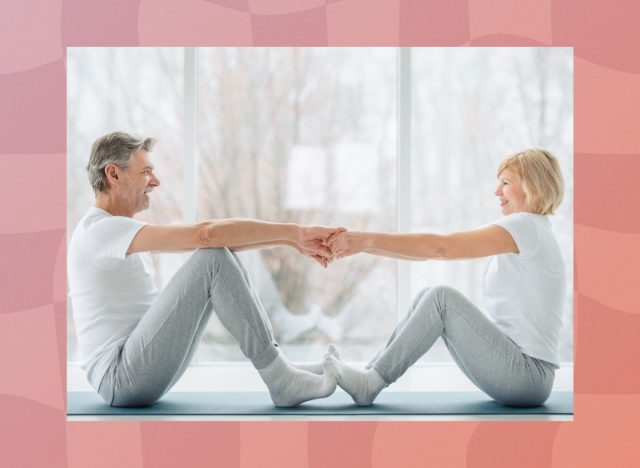
Great news, right? “After age 35, everyone loses a half a pound of lean muscle a year, and the only thing that stops it is testosterone (TT) and Growth Hormone (GH),” 61 year-old Dr. Len Lopez, a clinical nutritionist, strength and conditioning coach, and chiropractic sports physician, told us. “The 3 ways to make TT and GH are sleep, exercise, and sex.” If you’re already getting enough sleep and you’re partaking in an exercise regimen (more on that later), consider getting more of the third. “Remember: the more intense your workout, the greater TT and GH spike you produce!,” says Lopez. And for more great exercise advice, don’t miss The Secret Mental Trick for Getting a Lean Body, Say Experts.
Marble at Least 2 Days of Weightlifting into Your Week
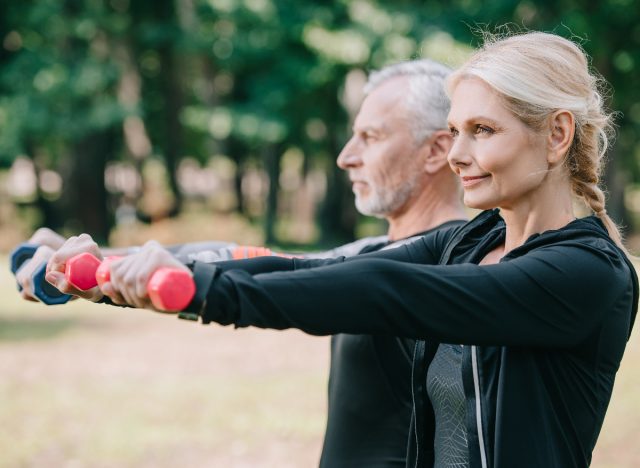
Just as lifting weights is the single best exercise you can do after 50, the leading experts will tell you that the same goes for your 60s. “Many individuals over the age of 60 forget about lifting weights—or think that they can’t build muscle as they age—but that’s just not true,” explains Valerie Hurst, 61, an FAI-Certified Trainer & Certified Brain Health Trainer. “By adding weight or strength training at least two days per week to your exercise routine, you can avoid loss of muscle, and thus stay independent longer by maintaining your strength and balance.”
The question is, how much should you lift? As with strength training at any age, you’ll need to add stress to your muscles to see better results, so it should be difficult and not easy—though definitely not so heavy that you’re putting yourself at risk of injury.
So, it’s important go easy when you start, and it’s a good idea to consult with your doctor beforehand and seek out professional help from a personal trainer as you wade into the world of strength training.
“Lifting heavier will give you even more muscle definition and increase your strength,” says Hurst. “When you can easily accomplish 8-12 reps by your third set, it’s time to move up in weight. You want to challenge your muscles. Start pushups on the wall, move to doing them on your knees on the floor, then move to doing pushups on your toes. Start with just a couple reps and challenge yourself to do one more each day.”
She advises you to also mix it up. “Try bands and balls, and bodyweight moves with TRX straps. Not only does this keep your routine fresh, but it challenges and strengthens different muscles.”
But, If You Can, Focus on Compound Lifts
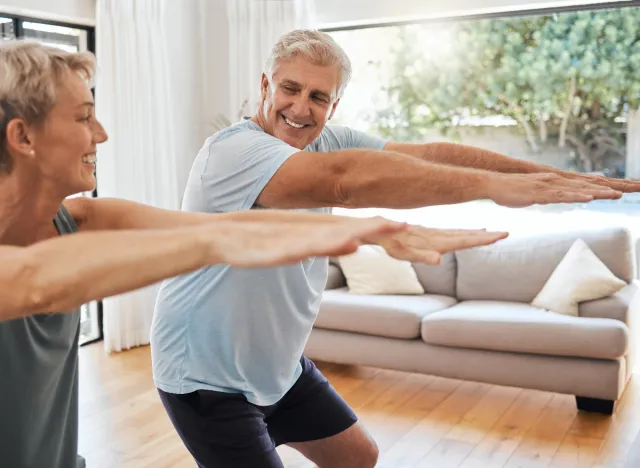
“The single best way to keep lean over 60—and I am living proof that it works—is to lift weights, performing compound movements such as squats, lunges, bench press, and deadlifts, all of which use the major muscle groups,” says Robert Herbst, 63, a personal trainer and 19-time world champion powerlifter who supervised the drug testing at the 2016 Rio Olympic Games. “These raise your metabolism (so you burn more calories) for 48 to 72 hours afterwards as your body rebuilds muscle that was broken down during the workout.”
He also notes that these full-body lifts will help the body build new muscle in anticipation of greater loads in the future. “That new muscle is metabolically active so it will also burn calories, even at rest,” he says. “People normally lose muscle mass as they get older and their metabolism slows, so they put on fat. By lifting weights, you halt or reverse the loss of muscle mass and burn fat, giving you the metabolism of a person decades younger.”
Also, it’s important to note that scientists say that doing squats comes with another added benefit: It’s the single best exercise you can do for your brain and your cognitive performance.
According to Damian M. Bailey, Ph.D., a professor of physiology and biochemistry at the UK’s University of South Wales’ Neurovascular Research Unit and an advisor to the European Space Agency, squatting is an “intelligent” form of exercise, in which you’re “intermittently challenging the brain with an increase of blood flow and a decrease of blood flow.”
“This toing and froing from high-flow to low-flow challenges the inner lining of the arteries that supply blood to the brain,” he explained to the BBC4 podcast “Just One Thing.” “We think this it’s good because it realizes the good chemicals that the brain needs to grow the things it needs to grow to become more intelligent.” And for more on the benefits of squatting, see here to read about What Doing Squats Does to Your Body, Says Science.
Monitor Your Progress
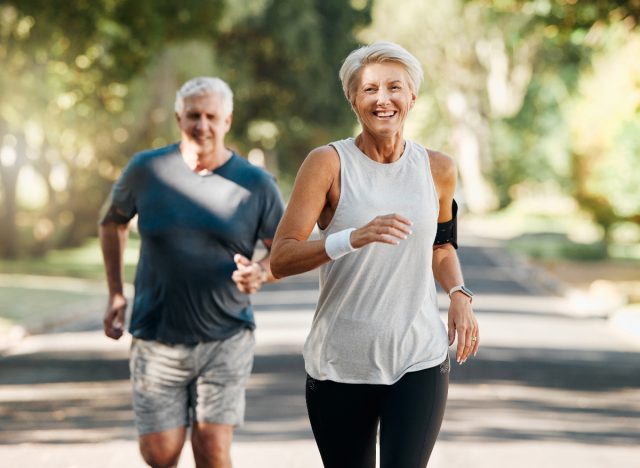
This is especially important if you’re new to exercise and you’re dedicated to improving your diet. You need “to combine exercise and your healthy eating plan,” says Mimi Secor, DNP, FNP-BC, FAANP, FAAN, a 66 year-old nurse practitioner and bodybuilder who has been advising women on living healthier for more than 40 years. She advises you to have a plan, and “recording all food ingested is also very helpful because as we get older, precision in calories consumed versus calories expended becomes more critical,” she says.
She agrees that, in terms of exercise, weight training is the best way to go. “Weight training targets increasing muscle mass, which can be helpful for weight loss because the increased muscle mass increases metabolism,” she says. “This can lead to higher metabolism and greater weight loss while consuming the same calories.”
Walk More
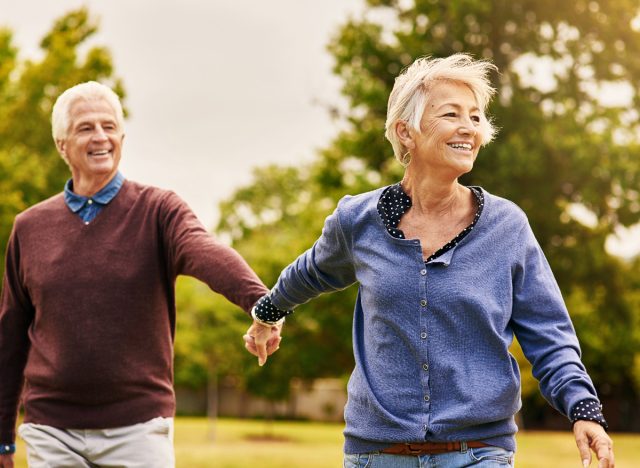
Whether you’re an old fitness pro who can safely practice HIIT or do Olympic lifts, or you’re new to exercise and you’d simply like to get lean, all of the experts would advise you to walk more every day—whether you’re “exercising” or simply going to the grocery store. This is especially the case if you’re newer to exercise. “Exercise is an absolute necessity for health and longevity, but many clients come to me too sedentary or overweight to do anything too strenuous right away, so we’ll talk about nutrition and I start them on a walking program,” Lorie Eber, CPT, a trainer, health coach, and gerontologist, in her 60s, explained to Prevention. If you’re interested in some great ways to walk to get lean, don’t miss The 4 Walking Workouts That Will Help You Get Lean, Says Top Trainer.
Jump in the Pool
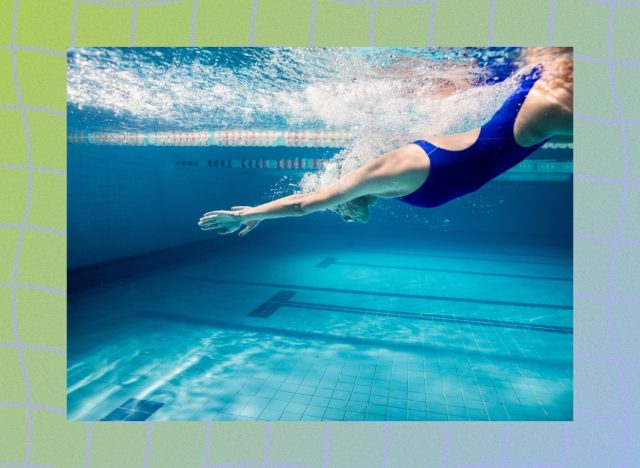
If your body isn’t up to strength training, consider more aquatic forms of exercise, as moving through water, which provides gentle resistance, is a great way to work your muscles, build strength, and burn calories. “Doing laps in a pool (walking or swimming) is a great cardio workout, especially helpful if you are overweight or have joint pain,” Gary Calabrese, PT, DPT, a physical therapist at the Cleveland Clinic has noted.
Consider Tai Chi
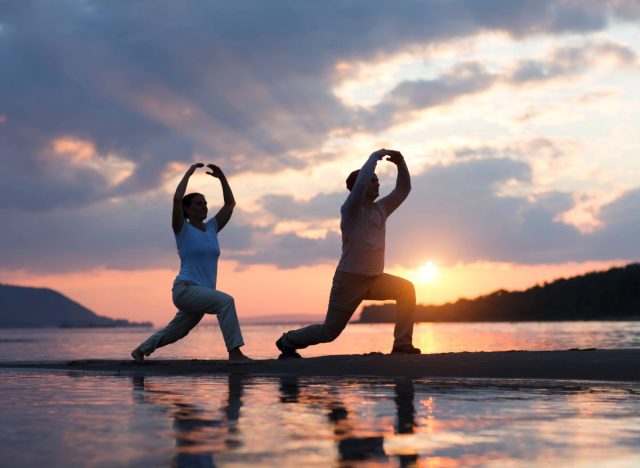
A new study published in Annals of Internal Medicine found that doing Tai Chi—the ancient martial-arts practice of moving your body in a flowing, meditative way—is actually a terrific way to lose belly fat if you’re over 50. At the end of the study, those who exercised over the course of the trial and those who performed tai chi experienced a loss in body fat around their waist and lost weight overall. “Tai chi is an effective approach to reduce [waist circumference] in adults with central obesity aged 50 years or older,” the study concluded.
What’s more, research has showed that tai chi is great at improving balance, posture, mobility—all things that can help you fight arthritis—and can help promote stronger muscles (primarily in your legs). It’s also known to be an effective way to deal with stress. And for some more great exercise advice, see these Secret Tricks for Walking for Exercise, According to Walking Experts.








